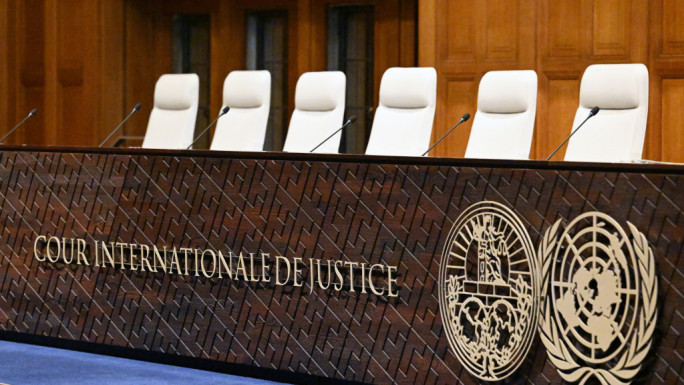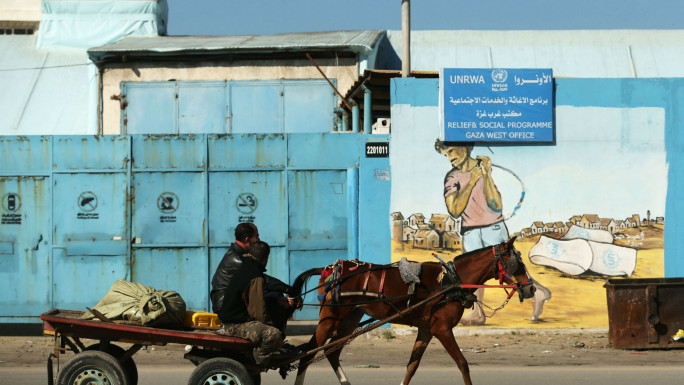
The answer to Yemen's problems doesn't lie in partition
This week, Yemen's Southern Movement urged the southerners to partake in a mass rally on November 30th to mark the independence day and reiterate their message to the world that their unity with Yemen's north is longer wanted.
Over the past few years, southern groups have rallied in squares in Aden or Hadramout on November 30th, celebrating independence day from the British (1967) and chanting in favour of partition from Yemen's north.
This call represents the will of several southern leaders who wish to put an end to Yemen's unity. They now see time the time as ripe for making this dream into a reality. Pro-separation southern groups see the unification of Yemen as a costly mistake for which they have paid dearly.
In May of 1990, Yemen's south and north merged into one country. It was a great political feat and a commendable stride forward by the leaders of the two states at the time.
Today, unity stands at stake as many southern leaders continue promoting the idea of separation and campaign in earnest to wrench the south from the north.
The flag of the former southern state is flying in some cities of Yemen's south such as Aden. Separatists appear to believe secession is the magic wand that would fix the problems in the south bring salvation to the people. This, though, is disillusion.
Unity is not the root of the problem
Looking back over the past 26 years of Yemen's history, it is clear that the country's unification is not at fault. Indeed, it is not unity which has paralysed development and progress in Yemen. Since independence in the 60s, Yemen has seen a series of sporadic revolutions and violent events in both the south and the north.
The south lived under British rule for over 120 years. When the southern people finally obtained independence in 1967, a series of gruesome battles kicked off as the southern leading factions themselves fought one another.
 |
It is unrealistic to think that separating the south from the north would establish peace |  |
The first southern president after independence, Qahtan al-Shaabi was ousted in June of 1969. The second president, Salim Rubai Ali was executed in June 1978 when the Socialist Party took over. In 1986, a month-long fierce war flared up out of a feud over power, leaving thousands dead and immense devastation. In the same year, Ali Salem al-Beidh became the president and continued ruling until 1990.
These bloody events occurred at a time when the south was an independent state, run autonomously by its leaders. This is clear evidence that a turbulent situation in the south, with fragmented political policies, existed even prior to unity with the north.
Presently, Yemen is synonymous with catastrophe. Mulling over the country's slide into this chaotic situation, there is cause to believe that growing extremism, unfair policies, intolerance and mismanagement of the country are actually at the root of Yemen's problems.
It is therefore, unrealistic to think that separating the south from the north would establish peace.
The menace of extremism for example, effects everyone. Both parts of the country have witnessed atrocities committed against the people by extremist groups. As people in the south and the north become more preoccupied with the prospect of a divided country, these groups would gladly infiltrate deeper into the country nationwide, were this to happen.
Al-Qaeda and Islamic State (IS) militants have undeniably growing presence in Yemen's south. Now that the officials of Yemen's legitimate government - including the president - are stuck in exile, what is happening in the south is in fact a de facto secession.
 |
What is happening in the south is in fact a de facto secession |  |
Any effort to drive the country towards secession will be doing a great service to al-Qaeda, helping them to set up a firmer foothold in Yemen's south.
As a result, the outcome of partition in Yemen would not only harm to the south, but the entire region. Instead of undermining unity, efforts should be directed towards eliminating the threat of violent extremism.
Southerners claim unity has brought them nothing but marginalisation, either politically or economically. In such a context, it is clear that unity has been badly effected by unfair policies.
But now, Yemen has reached a critical turning point and the future is uncertain. Whether Yemen adopts federalism or another form of governance, the south may well be better off. Full secession however, will cause further subdivisions.
Indeed, Yemenis do not need to be divided to overcome their problems. They need to be tolerant and accepting of each other, helping to dilute hatred and sectarianism.
In March of last year, Houthi militants advanced towards the south, taking over Aden, Yemen's second largest city. Their push sparked a vicious war which cemented a desire in the south to bring an end to the country's unity.
While it is true that the Houthis came from the north, it must also be noted they do not stand for all those in the north. Individuals doing injustice to others, be it in the south or the north, should be brought to book and not hold the unity of the country accountable.
 |
Instead of undermining unity, efforts should be directed towards eliminating the threat of violent extremism |  |
Yemen is an impoverished nation, but blame for the country's economic problems can be confidently pinned on mismanagement. Despite its wealth of natural resources, the country's riches remain unexploited or mismanaged.
In a previous in-depth interview, Yemeni economist Ahmed Saeed Shamakh echoed this, stating that "The core problem in Yemen is the management of the country's resources. These resources are not handled efficiently, and many of the revenues aren't monitored and end up in the pockets of corrupt officials."
So here lies the problem. Unity has nothing to do with the prevalent poverty enveloping Yemen.
The rise of secession
The post-unity tension between the south and north began to rise in early 1994. Prior to that time, the leaders of the country's two parts had had political disputes.
As those disputes continued unsettled, both sides escalated military action, culminating into a fierce civil war in May of 1994, when al-Beidh, who was the vice president of the unified Yemen and the then president of southern Yemen before unity, officially declared an end to the unity.
In July of 1994, pro-unity forces ultimately seized the south after over two months of fighting with southern separatist forces. This was the first attempt to dismember the unified Yemen.
 |
Despite its wealth of natural resources, the country's riches remain unexploited or mismanaged |  |
However, in 2007, southern army officers formed the Southern Movement, calling for fair treatment and reinstatement.
Those officers were sacked by former President Ali Abdulla Saleh following the civil war of 1994. They started staging protests, drawing attention to their cause. In time, the movement grew vocal, openly demanding secession from the north.
Currently, the movement's leaders are highly optimistic about partition. The fact remains however, that partition of Yemen would be disastrous.
When the South Sudan became an independent state in 2011, many thought their troubles would fade away. Since independence, South Sudan has been in a whirlwind of violence. Will Yemen's south duplicate the South Sudan's experience?
Khalid Al-Karimi is a freelance reporter and translator. He is a staff member of the Sana'a-based Yemeni Media Center and previously worked as a full-time editor and reporter for the Yemen Times newspaper.
Follow him on Twitter: @Khalidkarimi205
Opinions expressed in this article remain those of the author and do not necessarily represent those of The New Arab, its editorial board or staff.





 Follow the Middle East's top stories in English at The New Arab on Google News
Follow the Middle East's top stories in English at The New Arab on Google News


